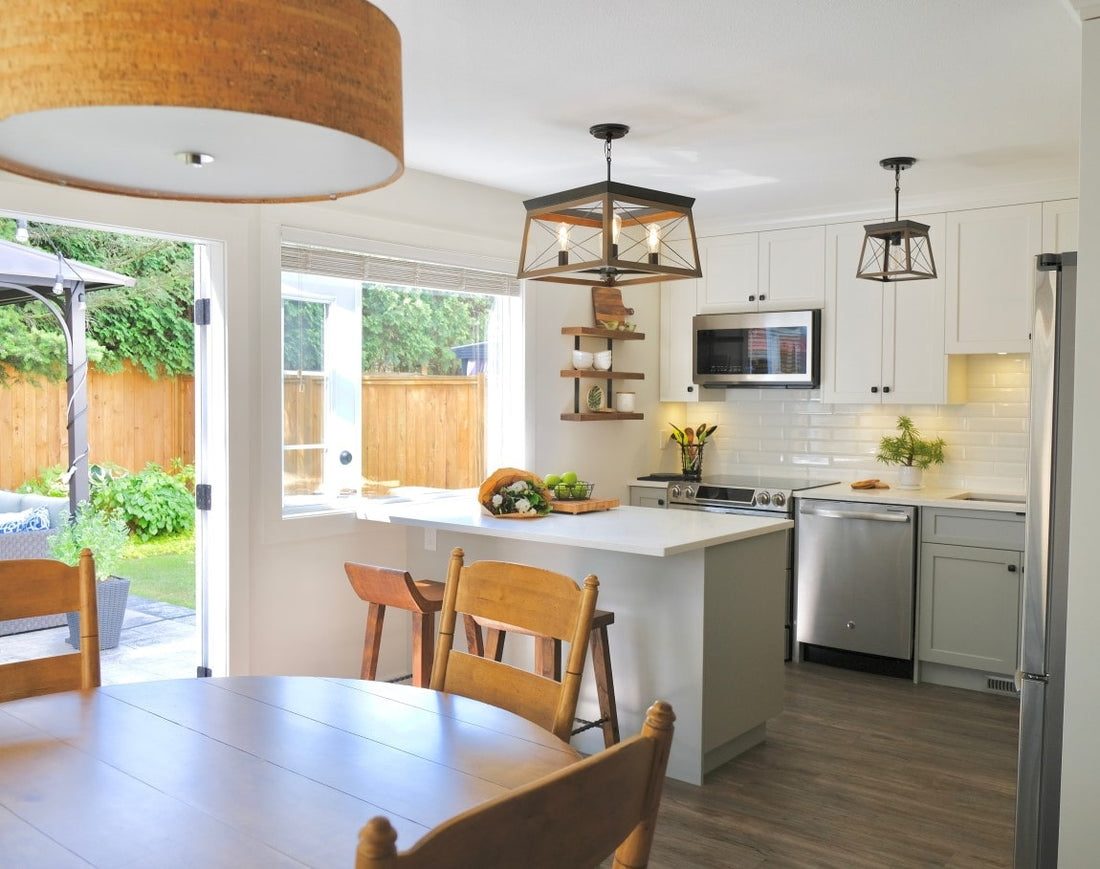Home Interior Design Styles: What is Farmhouse Style?
Combine vintage elements with new for an inviting atmosphere
RaShea Drake
August 6, 2019
*We interviewed multiple design professionals to create guides about the most popular interior design styles. After you’ve finished with farmhouse design, check out other styles on the Vevano Home Blog. If you liked farmhouse, you may also be interested in transitional.
A Brief History of the Farmhouse
The updated farmhouse style has its roots deep in centuries of history, back to the early settlers in the US. It was focused on usefulness, dependent on available materials such as wood, iron, and steel. Many of the core elements of farmhouse today are similar to its historic counterpart. However, there are important updates to the style which we will cover.
The Definition of Farmhouse Style
Farmhouse interior design is defined by practicality and comfort, relying on readily available materials and colors. Wood elements and white tones are indicative of farmhouse style. Timber was the easiest to come by, which is why there’s such an emphasis on wood elements. Another core aspect is that nothing must match perfectly. Where modern design is meticulous in matching the elements of a room in a minimalistic way, farmhouse is distinctly different. Knickknacks, antiques, or pairing a vintage chair with a new sofa enhances the farmhouse interior style. The beauty is in the functionality, punctuated by tinges of personality and history.
Characteristics of Farmhouse Interior Design
Simplicity leads the charge when it comes to the elements of farmhouse style. It’s easy to build onto or take away elements as you see fit. Use a mix of vintage finds or inherited items, pairing those with newer elements. It is not a measured style – or even a style that requires heavy planning. It’s very dependent on what you have and want, which makes farmhouse unique in that sense. When it comes to colors, Kayla Hein of Modern Castle explains that “the color palette of the farmhouse style includes a lot of gray or ‘greige’ tones, whites and blacks.” Accent colors are ones typically found outside, such as yellow, blue, red, or green.
We also made a handy graphic about the characteristics of farmhouse design below. You can save it to your computer or add to your Pinterest board for later.
Design:
“Features and accessories you’ll see in this style include: bead boarding, open shelving, exposed wood, mixed metal pieces, butcher block counters, and apron sinks.” Marty Basher, Organization Design at ModularClosets.com
- Design is clean, but practical. It should be easy to move around and find what you need.
- Rooms are a mix of wood focal points mixed with iron or steel fixtures and finishes. Think shiplap, exposed wood beams, and wood floors.
- Other common elements include suede, leather, and cotton or linen fabrics.
- Natural light opens up the room. Accent with window treatments such as coverings, curtains, and valances.
Color Palette:
“The main color for the farmhouse style is definitely white, reminiscent of the whitewash commonly used in traditional farmhouses. White, or other neutral tones, help draw attention and enhance other colors and textures you’re using.” -Martha McNamara, Vevano Home Director of Design and Product
- The main colors used are shades of white and neutrals such as beige. The focus is for walls to be clean, helping to emphasize other interior elements such as furnishings and fixtures.
- Accent colors add personality and an inviting atmosphere. Bold or subdued hues work here, with common colors being barn red, robin’s egg blue, forest green, or sunny yellow.
- Lean into the wood grains, whether it’s light or dark. Light woods make great complements while darker hues offer a rich touch.
Décor:
“Some key elements of the farmhouse style include open concept floor plans, wide porches, neutral or muted color palette, natural textures, natural light, and incorporated greenery.” – Kayla Hein, Interior Architect and Designer/Creative Director, Modern Castle
- Use older elements where appropriate, but don’t go overboard. Vintage tables or chairs, along with a few pieces of art or accessories, are perfect.
- Mixing and matching styles and tones works well, lending practicality and charm.
- Fireplaces are a good way to invite warmth and add some charm.
- Adding a variety of paintings, photographs, plants, and farmhouse-style motifs add color and personality to the space.
What is Modern Farmhouse Interior Design?
Modern farmhouse is fusing modern and farmhouse styles together. There is more planning than traditional farmhouse, but more warmth and décor than modern. Where modern is form over function, modern farmhouse puts equal weight on both elements. There is beauty in simple lines, but more eclectic pairings and décor than modern designs.
Conclusion
With an emphasis on a clean, inviting atmosphere, the farmhouse style is defined by simplicity and some callbacks to years and styles gone by. In that way, it creates a timeless look. Want to learn about other designs? Check out the rest of our series on interior design styles at the Vevano Home blog.










